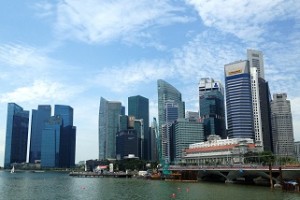
Singapore emerged as the fifth most popular market for Asia Pacific-focused closed-end property funds from 2014 to Q3 2017, according to a new report published by CBRE on Wednesday (31 January).
In fact, these entities pumped US$4 billion in investments into the city-state during the said period. Of this, the majority comprised value-added investments, followed by core/core-plus and opportunistic type investments.
Overall, these real estate funds have deployed US$63 billion out of a total war chest of around US$116 billion in Asia Pacific over the last four years, with three markets receiving 75 percent of the investments.
The top three investment destinations are China (US$11 billion), Japan (US$15 billion) and Australia (US$21 billion).
Looking ahead, these private equity funds are expected to invest an additional US$53 billion in the region. This is because such entities typically have a mandated investment period of three to four years, meaning they need to utilise the remaining war chest, or they will have to apply for an extension or return the money to investors.
While most of the new allocation is projected to go to Australia, Japan and China, Singapore is anticipated to remain another top investment destination due to its recovering office market. In particular, the city-state is expected to receive approximately US$6 billion, going to core/core-plus and value-added investments.
“In the office sector, rents in Singapore and Brisbane have reached the bottom and will continue to grow into 2018 and 2019. Grade A office buildings in prime areas will attract flight-to-quality leasing demand, although pricing is already reflecting improved rental growth,” said CBRE.
Aside from that, the consultancy revealed other commercial property investment options across different markets in the Asia Pacific region.
“Data centre opportunities are to be found in Japan, Singapore and Hong Kong, while Sydney, Melbourne and China tier I cities will be the main focus for cold storage. China, in particular, is expected to witness surging demand for cold storage facilities amid the ongoing boom in online shopping for fresh food. Australia will also benefit from this trend as China is its largest food export market.
“Multi-family housing is an attractive option in Japan due to its relatively stable cash flow and higher yields. This sector is also gaining traction in Australia, along with long-leased residential in China, although investors should closely monitor policy changes in both markets,” it added.
Romesh Navaratnarajah, Senior Editor at PropertyGuru, edited this story. To contact him about this or other stories, email romesh@propertyguru.com.sg